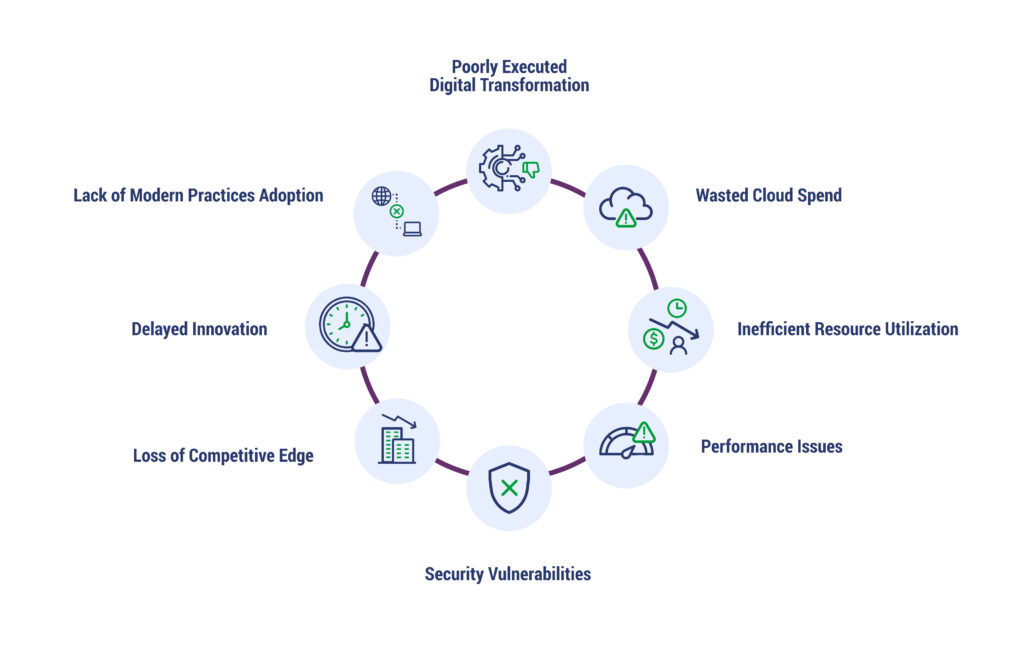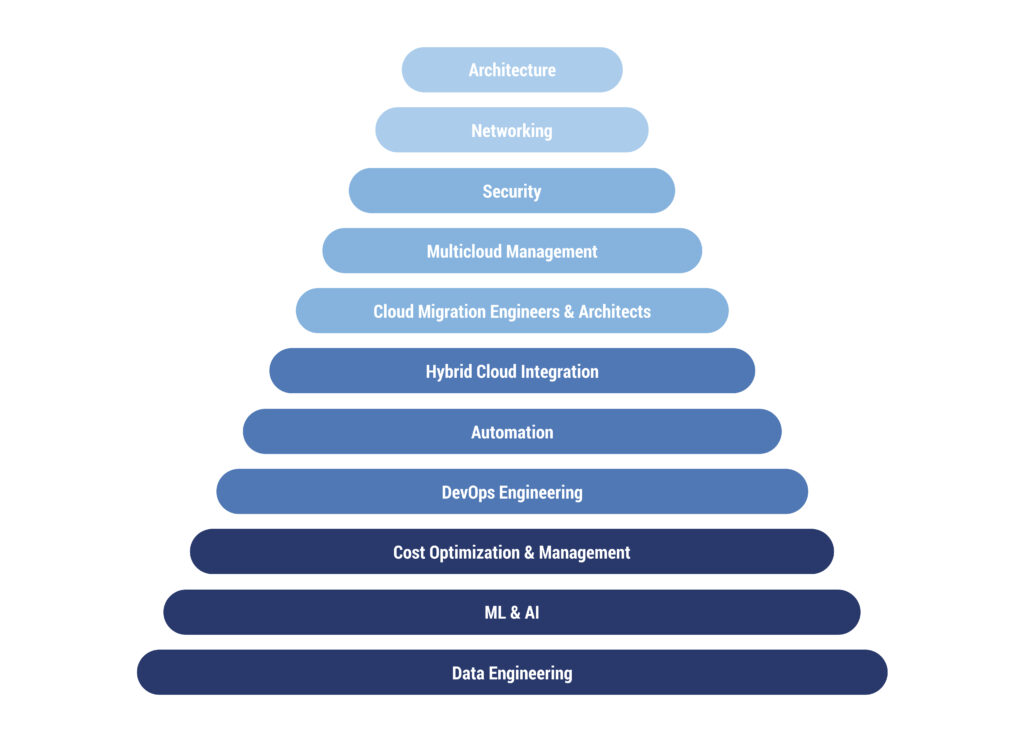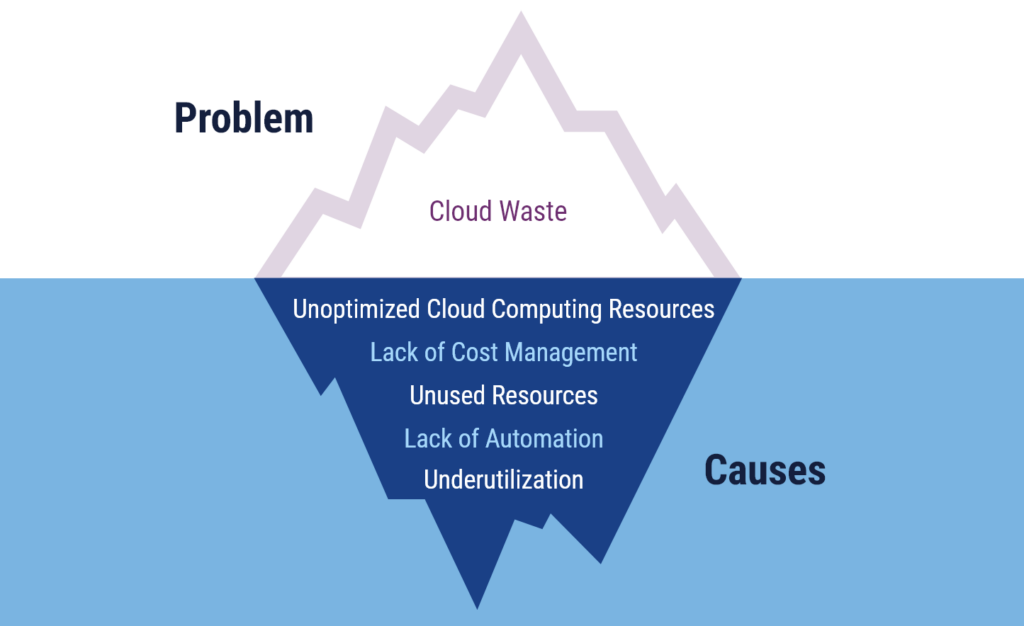
Although operating in the cloud offers significant advantages, getting there isn’t an easy feat. Migrating your business to the cloud, leveraging advanced services, and continuous optimization requires extensive expertise to ensure the transition is smooth and day-to-day is successful. So, any gaps in cloud knowledge or skills can be impactful, and in some cases, detrimental.
A cloud skills gap can feel like wanting to form a band, but only having one instrument. Overcoming a cloud skills gap brings the whole ensemble together, working toward a unified goal. To close the gap, businesses need to understand which roles are most in demand and how they might want to use external expertise to fill in what’s currently missing.
What Are Cloud Skills Gaps?
Cloud skills gaps are considered the differences between the skills currently on staff vs. the skills needed to maintain cloud systems efficiently and effectively. Where your organization wants to be with cloud skills compared to where you currently are is how you would measure your cloud skills gap. The width and breadth of a cloud skills gap depend on what you want to do in the cloud (i.e. modernize), your in-house abilities, your budget for skilled external help, and how much time you’re able to dedicate to closing it.
The Impact of the Cloud Skills Gaps
Regardless of why you have a cloud skills gap, its existence can significantly impact your organization. Cloud adoption is often associated with greater opportunities to innovate and compete in a marketplace. Cloud computing can also improve your security profile. Failing to have the necessary skills to harness the cloud can mean falling behind or becoming obsolete in the eyes of your end users, and result in not being able to outpace competitors.
These gaps can impede the adoption of cloud technologies and hinder the organization’s ability to harness the full potential of the cloud. Without skilled professionals, critical tasks like cloud architecture design, migration planning, and resource optimization may be inadequately executed, leading to wasted cloud spend, inefficient resource utilization, and performance issues. Additionally, security vulnerabilities can arise due to a lack of expertise in cloud security practices, potentially exposing the organization to data breaches and compliance violations.
In today’s dynamic business landscape, agility is paramount, and organizations need to rapidly develop and deploy new applications and services. A lack of cloud skills can delay development and deployment cycles, causing the organization to fall behind competitors. Moreover, teams may struggle to adopt modern practices like DevOps and infrastructure as code (IaC), which are essential for achieving the flexibility and speed required in a cloud-native environment.

Ultimately, cloud skills gaps can:
- Erode the competitive edge
- Hinder innovation
- Undermine the success of a digital cloud transformation
Examples of Skills Gaps
Did you know one major barrier for businesses stems from an overall tech skills gap? For every 100 tech jobs available, there are only about 65 workers able to fill the roles. With that, a shortage of professionals with skills area such as the following can pose significant challenges for businesses striving to harness the full power of the cloud:
- Cloud Architecture and Design: Many organizations lack professionals with in-depth knowledge of cloud architecture and design principles. This gap can lead to suboptimal cloud deployments, where resources are not efficiently allocated, scalability is hindered, and cost management becomes a challenge. Skilled architects are crucial for designing cloud solutions that align with an organization’s goals, ensuring security, performance, and scalability.
- Cloud Security: Many organizations lack professionals with expertise in cloud security practices, leaving them vulnerable to data breaches and compliance issues. Specific examples of skills gaps in security can include understanding Cloud Security Posture Management (CSPM), cloud-specific security configurations, identity and access management, encryption, and/or compliance with industry regulations like GDPR or HIPAA.
- Cloud Cost Management: Organizations often struggle to control cloud costs and decrease cloud waste due to a lack of skills in cloud optimization and management. An improper level of expertise in this area can result in unexpected bills, overspending, and inefficient resource allocation.
- Cloud Governance and Compliance: Maintaining proper governance and compliance in the cloud is challenging without professionals who understand the complexities of cloud-native governance frameworks, auditing, and compliance monitoring. A lack of expertise here can lead to non-compliance issues and governance shortcomings.
- Cloud Automation and DevOps: Automation and DevOps practices are integral to maximizing the benefits of the cloud. However, many organizations lack professionals who can effectively implement automation tools, continuous integration/continuous delivery or deployment (CI/CD) pipelines, and IaC. This skills gap can hinder agility, slow down development cycles, and impede the ability to quickly adapt to changing business needs.
The Value of Cloud Specialists
Having individuals with a deep understanding of cloud technologies, architectures, and best practices on-deck is crucial to a successful cloud presence. These skilled professionals have the capacity to analyze existing infrastructure, identify the best-fit cloud solutions, create a comprehensive cloud migration strategy, and launch the migration with minimal disruptions and downtime.
Cloud specialists possess knowledge of advanced services and capabilities in the cloud, such as artificial intelligence (AI), machine learning (ML), internet of things (IoT), data analytics, etc. and have the skills needed to:
- Select the appropriate cloud service provider
- Ensure data integrity and security
- Optimize resource allocation
- Integrate existing systems with the cloud environment seamlessly.
Their expertise also extends to monitoring and managing the cloud infrastructure post-migration, allowing for better, more efficient performance optimization and scalability.
What Are the Most In-Demand Cloud Skills?
A successful cloud transformation starts with assembling a team with the necessary know-how, skills, and resources, and then putting them in the right roles. When it comes to a cloud transformation, organizations need seasoned full-time experts with very specific technical and business expertise.
Out of the skills needed to operate in the cloud, there are a few that are more in-demand than others. These skills can build a solid foundation, scale systems, optimize resources, and evolve cloud infrastructure effectively using emerging technologies.

Architecture
Cloud architects work to design cloud computing architectures which act as the blueprint for infrastructure. In most cases, architects can also be responsible for deployment and cloud infrastructure management, which enables efficient design and maintenance of the cloud environment. They also have expertise in various cloud platforms, including Amazon Web Services (AWS), Microsoft Azure, Google Cloud Platform (GCP).
Networking
An expert knowledge of networking is necessary to create secure, efficient network architectures, including virtual private clouds, network security, and load balancers. A well-designed network is essential for smooth communication between cloud resources.
Security
The threat landscape is constantly changing. Comprehensive security is paramount to protect sensitive data and maintain compliance with industry regulations. Cloud security engineers should be up-to-date on prevalent, relevant, and emerging threats and be poised to secure and defend cloud environments by implementing robust security measures, identity and access management, encryption, and regular security audits.
Multicloud Management
Companies who have adopted a multicloud strategy to enhance redundancy and flexibility need the help of multicloud experts to effectively manage workloads and optimize resources across various cloud platforms. Multicloud environments require a unique skill set that includes expertise in orchestrating resources, ensuring seamless interoperability, and optimizing cost-efficiency across cloud providers.
The skills of multicloud specialists play a pivotal role in helping organizations harness the benefits of multiple cloud platforms, such as avoiding vendor lock-in, enhancing fault tolerance, and achieving geographic diversity in data storage.
Cloud Migration Engineers and Architects
Cloud migration engineers and architects have emerged as some of the most sought-after professionals in the cloud domain. They specialize in the intricate art of planning, executing, and managing the migration of applications and data to cloud environments. They also possess a deep understanding of existing infrastructure, meticulous assessment of compatibility with the chosen cloud platform, and the development of comprehensive migration strategies. Additionally, these migration engineers and architects work closely with solution architects, DevOps teams, and cloud providers to orchestrate a seamless transition.
Hybrid Cloud Integration
As some applications remain on-premises due to specific requirements or constraints while others migrate to the cloud to leverage its scalability and agility, there’s a need for experts who can adeptly integrate and manage hybrid cloud environments. Their role involves designing and maintaining seamless connections between on-premises infrastructure and cloud services, ensuring data consistency, security, and accessibility across the hybrid environment.
Automation
Automating manual processes can save businesses time and reduce the likelihood of human error. However, automation does require specialized skills to ensure the rules are set up and executed properly.
Cloud automation engineers specialize in harnessing automation tools and scripting languages to simplify tasks related to the cloud, including deployments, configurations, and management. Their primary goal is to diminish the need for manual intervention, boost productivity, and mitigate the risk of human errors in cloud operations. Proficiency in Infrastructure as Code (IaC) using tools like Terraform is also a key component of their skill set, allowing them to efficiently provision and oversee cloud resources.
DevOps Engineering
A DevOps team combines software development and business operations to continuously deploy and iterate on cloud-based applications. DevOps specialists help customize infrastructure to accelerate the delivery of cloud-based applications, streamlining the cloud migration process by promoting collaboration, automation, CI/CD pipelines, and deployment.
Cost Optimization and Management
Professionals who excel in cloud cost optimization and management can greatly help in controling and reducing cloud expenses, preventing budget overruns, and maximizing the value of cloud investments. Expertise in cost management ensures cloud resources are allocated efficiently and operational expenses (OpEx) are aligned with business goals, decreasing cloud spend waste and contributing to long-term financial sustainability.

Machine Learning and Artificial Intelligence
Professionals specializing in AI and ML play a pivotal role in crafting and deploying algorithms, models, and systems capable of learning from data and performing tasks that typically require human intelligence. Their expertise spans diverse applications, encompassing natural language processing, computer vision, recommendation systems, and predictive analytics. These experts are responsible for innovation across multiple sectors, harnessing data-driven methodologies to forge intelligent systems capable of learning, adapting, and making predictive decisions.
Cloud machine learning and AI tools can work in conjunction with automation to set rules, make predictive decisions, and learn from additional collected data to improve efficiency in the cloud.
Data Engineering
The role of data engineering focuses on the creation, construction, and upkeep of data infrastructure and pipelines, crucial for the seamless collection, storage, processing, and analysis of data. Data engineers handle substantial datasets, guaranteeing their accessibility, dependability, and readiness for utilization by data scientists, analysts, and various stakeholders.
Managing data in the cloud requires data engineering skills to handle data integration, transformation, and storage. Proper data engineering ensures data is available, consistent, and accessible across cloud services.
Overcome the Cloud Skills Gaps by Working with an MSP
Are you ready to bridge the cloud skills gap and propel your business forward? At TierPoint, we understand the challenges that come with modernizing your IT infrastructure. Our expert team is here to help you navigate these complexities and ensure your organization is equipped with the necessary skills and tools to thrive in today’s digital landscape. Don’t let a lack of cloud expertise hold you back from achieving your business goals.
Read our Modernize Your IT and Drive Growth guide to learn more about how TierPoint can support your IT transformation journey. Discover how our tailored solutions can help you enhance operational efficiency, drive innovation, and maintain a competitive edge. Take the first step towards closing the cloud skills gap and unlocking your organization’s full potential today.
Want more? Download our Journey to the Cloud eBook to learn how to minimize the Risk and maximize the benefits of cloud adoption.

